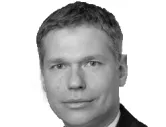How to get the 'right mix' of power generation in Asia
By Thomas HagedornDemand for electricity today is growing faster than production.
According to the Institute of Energy Economics, Japan (IEEJ), Asia’s primary energy consumption is expected to increase at an annual rate of 2.5 percent and will account for 61 percent of the world’s primary energy consumption by 20351.
As a result, the region is grappling with a host of energy challenges, ranging from the need to provide enough power to communities, to increased pressure to find alternative clean sources to meet these needs.
The traditional picture of large power stations feeding into electricity grids is also changing. The emergence of renewable energy sources is providing alternative ways in which nations can generate, distribute and consume energy.
However, these alternative energy solutions – if not managed properly – can complicate instead of assist countries. The future of energy does not lie in a single production model but more in achieving the ‘right mix’ of power generation options for different countries, regions and continents.
The changing trends in electricity generation and consumption
It is not a surprise that there is increased pressure on the shoulders of electricity producers to meet the growing demand for electricity. Fossil fuel reserves are declining and it is important to start looking at alternative sources before we run out of energy sources.
Adding to the mix, are the growth of alternative sources of energy such as wind and solar power that is increasingly being generated not only by power plants, but on a smaller scale, by individual consumers as well. This is driven by the demand for individual solutions.
Countries traditionally depend on large centralized power stations that feed electricity into national grids to reach consumers. However, in recent years, we are also witnessing a change in the structure of power grids.
Instead of a single, one-way producer-to-consumer transmission, consumers are also beginning to feed back in to the power grids. Shifting utilities to a more decentralized power generation system will also grant consumers greater flexibility in deciding how and when to use electricity.
In Germany, the traditional energy chain is being phased out by “power matrices” consisting of countless hubs and habitats.
21st century as the new electricity age
We are now in the time where electric power is emerging as the dominant energy source. Electricity offers some of the highest efficiency levels in meeting our energy needs.
The growth of clean electrification is a sign that we are maturing in the adoption of alternative electricity production methods and sources.
As earlier mentioned, we have come to a time where not only producers, but consumers generate electricity as well. This new hybrid of consumers and producers, “prosumers”, receive electricity, and may also periodically feed back into the grid, their own power, which is generated via rooftop solar panels or other small scale generating sources.
Apart from generating additional electricity, the storage of this generated energy is equally important. As we know of today, pump storage is the best technology to date, however the use of battery technology is also picking up especially in areas such as electric vehicles.
Embracing energy complexity to meet today’s energy demands
The change is in shifting the focus away from one single generating technology. We need to move to a more complex model with more alternative power sources.
With increasing energy generation alternatives and energy being transmitted on “two-way streets”, there is a need for stronger grid networks to combine all the disparate sources in an efficient and affordable way.
In order to benefit and not drown in the complexity of these energy alternatives, countries need a smart power matrix to help manage the different mix and proportion of central power plants, power grids, distributed power generations, “prosumers” and storage.
The power matrix for each country will differ based on individual requirements. Developing countries with less developed power grids may depend more on centralized power plants.
On the other hand, developed countries with more “prosumers” may see the need to build up on storage and power grids to increase the nation’s sustainable energy levels.
Getting the right mix
The issue today is no longer around which source of energy is better than the other, but of how best to harness the benefits of each source and achieving the right mix of generating capacity for different countries, regions and continents.
_______________________________
1Asia/World Energy Outlook 2012, The Institute of Energy Economics, Japan, November 5, 2012




















 Advertise
Advertise







